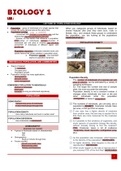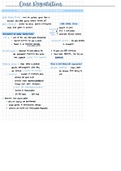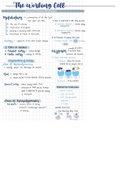bio1 (BIO1)
San Diego City College
Popular textbooks
Campbell Essential Biology
Eric Jeffrey Simon, Jean Dickey, Kelly A. Hogan, Jane B. Reece
3 documents
All 12 results
Sort by
Biological populations evolve through genetic changes that correspond to changes in the organisms' observable traits.
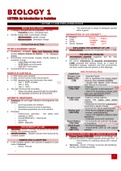
-
Introduction to evolution lecture notes
- Class notes • 3 pages • 2022
-
- $10.49
- + learn more
Evolution is the process of change in all forms of life over generations, and evolutionary biology is the study of how evolution occurs. Biological populations evolve through genetic changes that correspond to changes in the organisms' observable traits.
Gene regulation is the process of controlling which genes in a cell's DNA are expressed (used to make a functional product such as a protein)
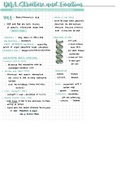
-
DNA structure lecture notes
- Class notes • 5 pages • 2022
-
- $10.49
- + learn more
The DNA molecule consists of 4 nitrogen bases, namely adenine (A), thymine (T), cytosine (C) and Guanine (G), which ultimately form the structure of a nucleotide. The A and G are purines, and the C and T are pyrimidines. The two strands of DNA run in opposite directions.
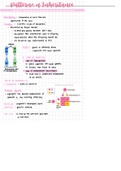
-
Patterns of inheritance lecture notes
- Class notes • 4 pages • 2022
-
- $10.49
- + learn more
Patterns of inheritance in humans include autosomal dominance and recessiveness, X-linked dominance and recessiveness, incomplete dominance, codominance, and lethality. A change in the nucleotide sequence of DNA, which may or may not manifest in a phenotype, is called a mutation
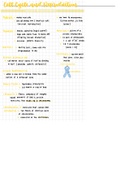
-
Cell Cycle and Reproduction Lecture Notes
- Class notes • 7 pages • 2022
-
- $10.49
- + learn more
The cell cycle (cell-division cycle), is a series of events that take place in a cell leading to its division and duplication. The main phases of the cell cycle are interphase, nuclear division, and cytokinesis. Cell division produces two daughter cells.
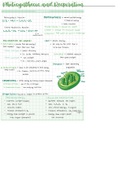
-
Photosynthesis and Respiration lecture notes
- Class notes • 5 pages • 2022
-
- $10.49
- + learn more
Photosynthesis converts carbon dioxide and water into oxygen and glucose. Glucose is used as food by the plant and oxygen is a by-product. Cellular respiration converts oxygen and glucose into water and carbon dioxide. Water and carbon dioxide are by- products and ATP is energy that is transformed from the process.
This chapter addresses how working cells use membranes, energy, and enzymes
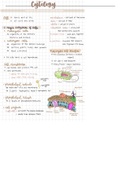
-
Cytology Lecture Notes BIO1
- Class notes • 5 pages • 2022
-
- $10.49
- 1x sold
- + learn more
Cytology is the exam of a single cell type, as often found in fluid specimens. It's mainly used to diagnose or screen for cancer. It's also used to screen for fetal abnormalities, for pap smears, to diagnose infectious organisms, and in other screening and diagnostic areas
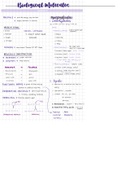
-
Biological Molecule Lecture notes
- Class notes • 2 pages • 2022
-
- $11.49
- + learn more
A biomolecule or biological molecule is a loosely used term for molecules present in organisms that are essential to one or more typically biological processes, such as cell division, morphogenesis, or development.

How much did you already spend on Stuvia? Imagine there are plenty more of you out there paying for study notes, but this time YOU are the seller. Ka-ching! Discover all about earning on Stuvia

